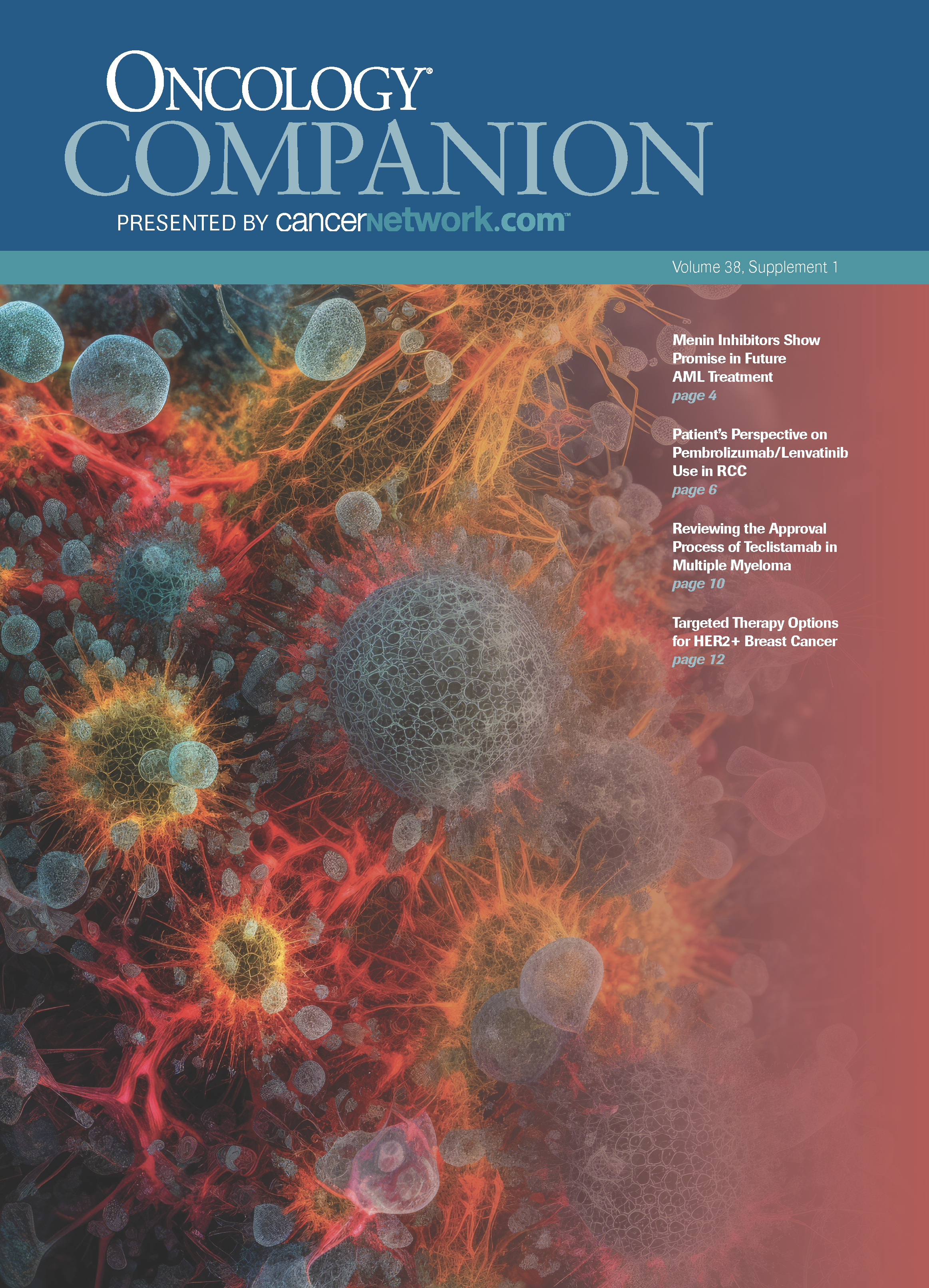Reviewing the Approval Process of Teclistamab in Multiple Myeloma
A group of experts discussed the approval process for teclistamab use in patients with multiple myeloma.
During a recent Training Academy hosted by CancerNetwork, experts discussed insurance coverage during treatment with teclistamab-cqyv (Tecvayli) and the resulting adverse effects for patients with multiple myeloma.
The expert panel

Cesar Rodriguez Valdes, MD, on Inpatient Treatments
If we are to start a patient with the step-up [dosing] in the hospital, we get the approval and the hospital [absorbs the] costs of the teclistamab and the tocilizumab [Actemra] and whatever agents are required during the hospital stay. Then we don’t need to worry about how much of a financial burden it’s going to be for the patient, because it’s [simply] a package that the insurance is going to pay the hospital.
Kirollos Hanna, PharmD, BCPS, BCOP, FACC, on Outpatient Treatments
There is some burden on the patient, and we [do talk] to the insurance providers about whether they will cover the hotel stay if [patients are] from out of town…. It’s a daily clinic visit, so there’s usually a co-pay associated with that. There are labs drawn every day, so there’s usually something associated with that. We haven’t done a complete analysis yet from a patient perspective. What we’ve shown is that it reduces the cost of care because, at least from the clinic’s perspective, our cost of doing the work in the clinic is less than the cost of an extended stay in the hospital.
Scott Soefje, PharmD, MBA, BCOP, FCCP, on the Outpatient to Inpatient Process
We try to send them through the fast track. If it comes through remote monitoring, then there’s a way to get them directly admitted to the bed should they need it. We’ve had times where they told them, “Go to the [emergency department]” because they didn’t have a bed, and we had to get them stabilized and then find the bed to put them in.
Frances Bell, NP, on Insurance and Adverse Effect Management
Typically along with the approval for teclistamab, we’re also putting in for insurance authorization and approval for intravenous immunoglobulin [IVIG] for infection prophylaxis. Usually, [infection] starts within the second cycle or by the second cycle with teclistamab. If it’s not approved, we may need to do a peer-to-peer [review] to get it approved. With all of the B-cell maturation antigen agents, IVIG is used to prevent infection and is important.
EP: 1.Multiple Myeloma: Overview of an Evolving Treatment Landscape
EP: 2.Treatment Considerations With Bispecifics in Multiple Myeloma
EP: 3.Where Do Bispecifics Fit in the Multiple Myeloma Treatment Paradigm?
EP: 4.Administering Step-up and Treatment Doses of Bispecifics in Patients With MM
EP: 5.Pharmacists’ Perspectives on Initiating Bispecific Therapy in Multiple Myeloma
EP: 6.Multiple Myeloma: Addressing Financial Barriers to Bispecifics
EP: 7.Initial Monitoring for CRS and AEs in Patients With MM on Bispecifics
EP: 8.Long-Term Monitoring for CRS and AEs With Bispecific Therapy
EP: 9.Bispecifics in Multiple Myeloma: Transitioning Patient Care to the Community Setting
EP: 10.Community Care Provider’s Perspective on Administering Bispecifics in Patients with MM
EP: 11.Supportive Care Strategies for Patients with MM on Bispecifics Treatment
EP: 12.Emerging BCMA Targeting Bispecifics in Multiple Myeloma
EP: 13.Non-BCMA Targeting Bispecifics in MM and Future Directions in Care
EP: 14.Reviewing the Approval Process of Teclistamab in Multiple Myeloma
Navigating AE Management for Cellular Therapy Across Hematologic Cancers
A panel of clinical pharmacists discussed strategies for mitigating toxicities across different multiple myeloma, lymphoma, and leukemia populations.
